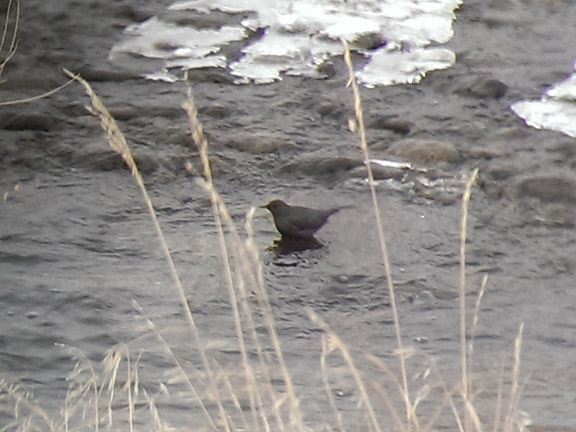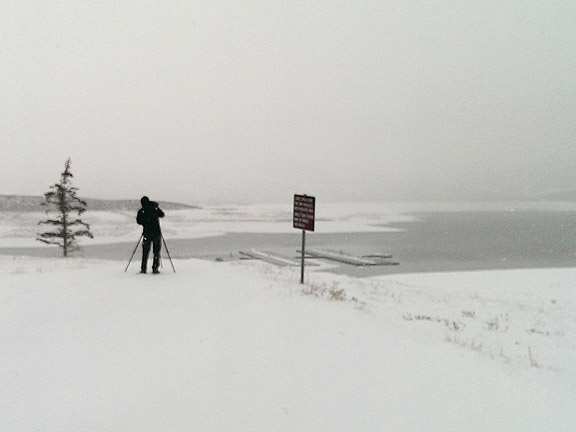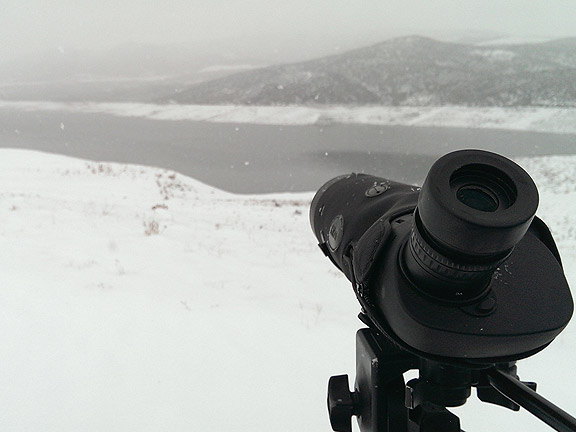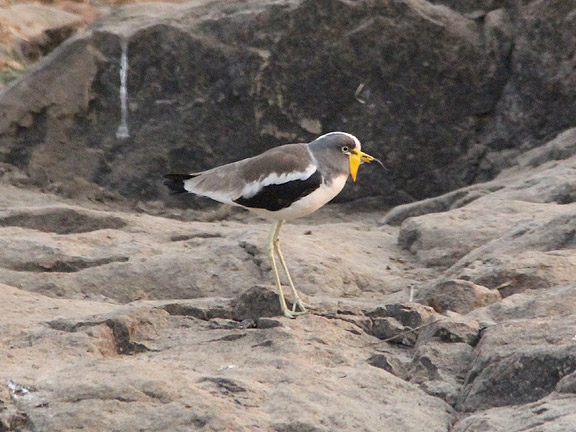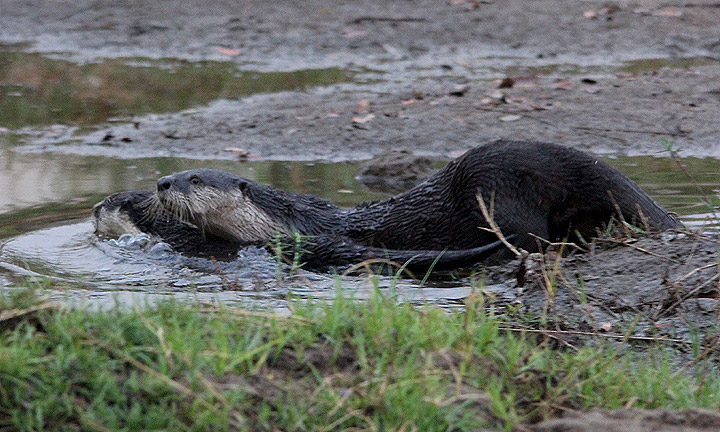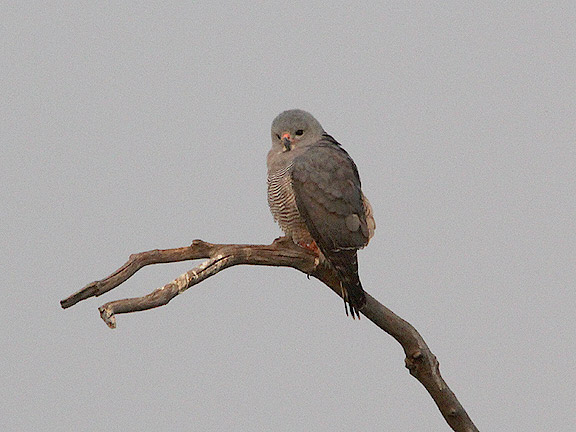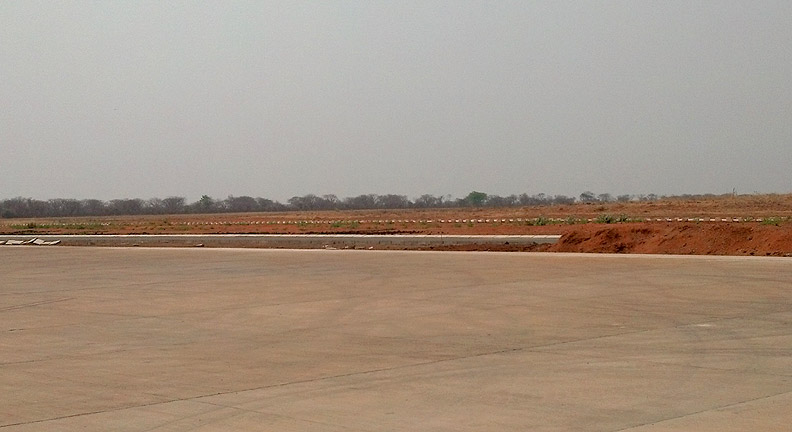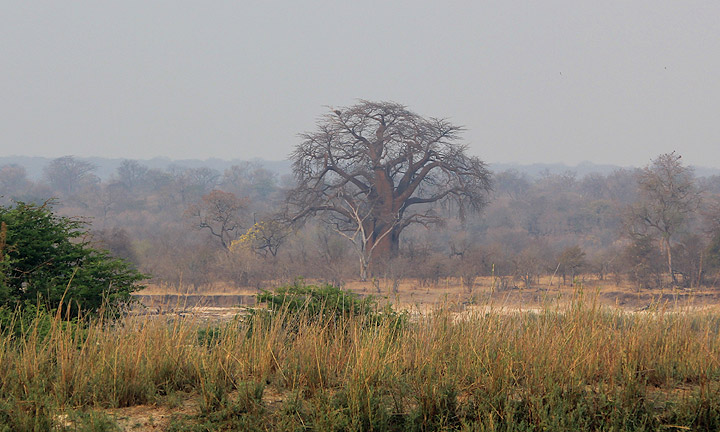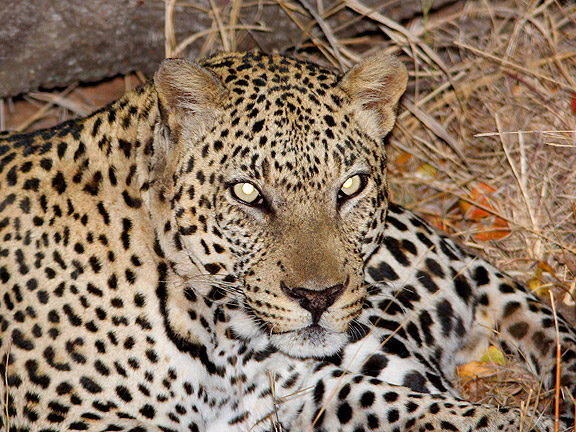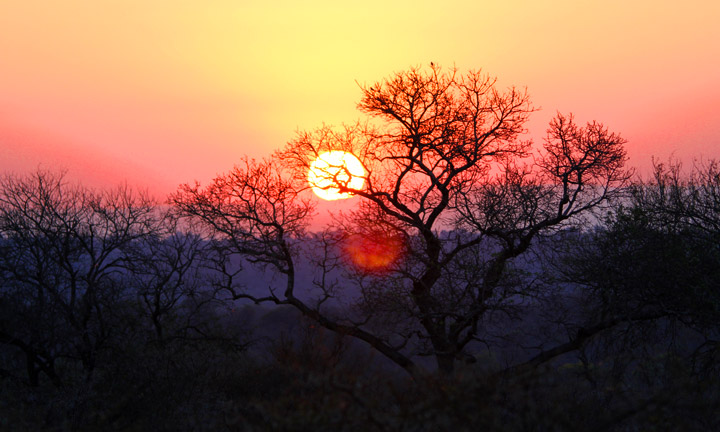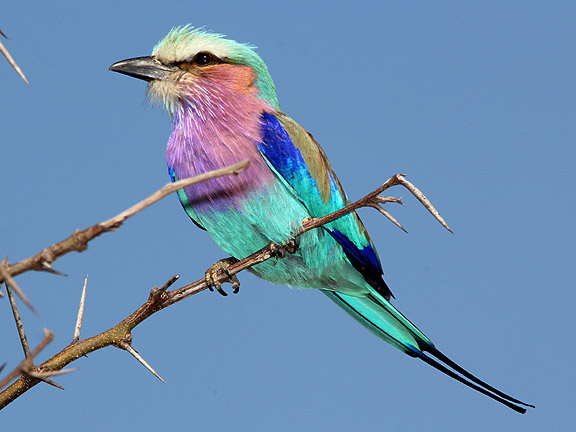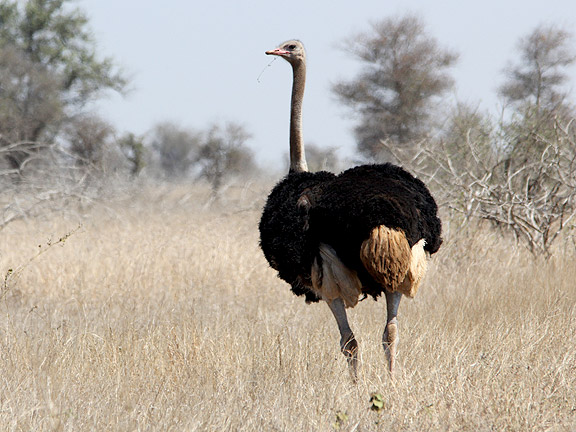Labels: 2013, art, birding, infographic, recap, review, utah
Utah Birds, Utah Birding, and Utah Birders. Promoting the sharing of information, and the conservation of habitat for birds in Utah and elsewhere. We are a group of people who want to share what we know, and create a positive birding experience in Utah.
BIRDERS BLOG
a blog by and for Utah Birders
Utah Birders 2013 Year in Review
posted by Tim Avery at
5:50 PM
on Tuesday, December 31, 2013
Bilsky's 2013 Highlights
posted by Jeff Bilsky at
5:50 PM
on Monday, December 30, 2013
Labels: 2013, highlights, recap, video
Goshawk Refresher
posted by Jerry Liguori at
12:30 AM
on Saturday, December 28, 2013
My original post on this subject had lots of nice color photos of Goshawks, and the B&W composite below, and I thought to myself -- why am I showing these color photos when the composite is the only thing I want to show? Goshawks are easy to identify in pictures showing all the field marks, but in the field with less than ideal views…maybe not so easy? Knowing how to identify Goshawks in flight is absolutely a matter of experience, there is no trick -- the more you see and study, the more familiar you become with them! But knowing the key ID traits helps speed the learning process.
The absolute #1 thing to look for is the shape of the wings. Goshawks have broad wings that taper toward the tips, and in some poses look like "broad-winged falcons", but in a soar show a nice angle where the base of the wings meet the hands. The tail is always long giving it that classic accipiter look! Adults are shorter-tailed but still look like the classic accipiter in most poses. The other trait that is important is the way they flap. Goshawks can flap their wings confusingly quickly (often smaller males), or labored and somewhat slowly (often larger females), but the wing beats are not snappy and weak (like Sharpy) or stiff (like Cooper's), but "fluid". I'm not going to say tail shape is useless, but it is far less helpful when separating them from Cooper's Hawks. Both can appear as "broad-tailed" as the other, but Goshawks vary more in regards to tail tip shape (rounded, squared, or wedged). Goshawks often appear slightly smaller-headed than large Cooper's Hawks, but male Cooper's Hawks after look tiny-headed.
Anyway, wing shape and wing beat are the keys to Goshawk ID in flight with less than ideal views! And here's a color photo of the juvenile plumage for those who want to file it.
Labels: identification, raptors
My 2013 Year of Birding
posted by Tim Avery at
6:30 AM
on Friday, December 27, 2013
2013 Park City CBC Recap
posted by Tim Avery at
8:38 AM
on Thursday, December 26, 2013
Kenny Frisch and I took the lakes portion of the count, which is mostly spent scanning the hopefully open water of the 2 reservoirs that lie in the count circle. We started the day off taking I-80 east to Wanship to check the Weber River below Rockport Reservoir. In Wanship a TOWNSEND’S SOLITAIRE was perched in the tallest pine in town. At the river were numerous AMERICAN ROBINS and a few MALLARDS, but no other waterbirds. 3 MUSKRAT were sitting out in the open, while a BALD EAGLE flyby provided excellent looks.
From Wanship we headed towards Rockport where we had a NORTHERN SHRIKE just below the dam. The reservoir was frozen solid so no waterbirds. At the inlet we picked up an AMERICAN DIPPER, and a small flock of CANADA GEESE were the only for the count. Above the reservoir we saw several BALD EAGLES along the river.
Next we headed over to Jordanelle to scan the north arm--if it were open. Luckily it was and there were a number of waterbirds present. Plenty of COMMON GOLDENEYE and COMMON MERGANSER. Several GADWALL, LESSER SCAUP, and BUFFLEHEAD along with the usual Mallards rounded out our waterfowl effort. We scored three species of Grebe with 5 WESTERN, a PIED-BILLED, and the best bird of the day, 2 very late HORNED GREBES.
The fog and snow made it difficult to san everything very well, but we figured we covered most of what was expected. We were done with the lake pretty early, so headed over to Deer Valley Resort to check the ponds where a pair of BARROW’S GOLDENEYE were present with a Common Goldeneye and pair of Ring-necked Ducks. We decided to run through South Snyderville Basin to check the warm springs, adding GREEN-WINGED TEAL to the count for the day. With some time left we made a quick drive north to The Preserve, but didn’t add any birds--just a couple of bull ELK.
Alex Peterson recaps the city portion of the count:
We left the morning rendezvous point and headed east along the I-80 frontage road (Highland Dr) and the Swaner Preserve watching the posts for raptors. Right before we reached the Old Ranch Road turn, we were rewarded with an AMERICAN KESTREL swooping down on a vole and then enjoying its earned breakfast on a post right next to the road. An amazing start to our Park City CBC--which we only captured with memories. We then headed along Old Ranch Road, turning into the Trailside Drive neighborhood to observe some feeders. Many feeders were empty or frozen over; but we found three terrific feeders that were a hot bed of activity. Besides the innumerable doves and starlings, we were rewarded with both MOUNTAIN and BLACK-CAPPED CHICKADEES. We also counted some Mallards in the neighborhood ponds. Despite the usual odd looks from the locals, we braved onward especially after one gentleman rewarded us with a vigorous #1 sign with his middle finger. With that encouragement, we then headed past Trailside Park and over into the Silver Summit area neighborhoods. Again, many empty feeders, but those that had seed not only rewarded the birds, but also us with plenty of activity.
Heading back to Old Ranch Road we crept slowly along counting the water birds (mostly Mallards, but also American Coot, RING-NECKED DUCK, and the only AMERICAN WIGEON of the count. We also found a number of raptors including RED-TAILED and ROUGH-LEGGED HAWKS on posts in the preserve. Following Old Ranch Road to the end (and counting the chickadees on the way), we entered into the neighborhoods of Southwest Snyderville. Regretfully only a couple of feeders in this area, but we continued to count the doves, magpies, starlings, robins, and mallards. To finish our morning, we entered into the Canyon Resorts neighborhoods where we were rewarded with a WESTERN SCRUB-JAY and a friendly Canyon employee who kindly shared his diverse vocabulary and hand gestures when he was momentarily delayed by our bird counting efforts. Not to end on a disparaging note, we also counted a BELTED KINGFISHER calmly perched alongside Hwy 224 by St. Mary's as well as a GREAT BLUE HERON.
Stephanie Dolmat-Connell and her husband Conor participated in their first ever Park City Christmas Bird Count (second CBC overall). Recap from Stephanie:
We were given the mountain region and were tasked with finding as many species of birds as possible. This sounds like a manageable task until you consider that we are fairly amateur birders that still have to reassure each other that we are, in fact, looking at a bird and not a bird stick or a bird tree or a bird rock. But we set off determined to do all we could in the name of citizen science. We headed first to Summit Park to see the infamous feeder off of Matterhorn Drive. The owners of these several feeders, which gave me several ideas for my own yard, were very nice and even put out peanuts to bring in the STELLER’S JAY, among DOWNY and HAIRY WOODPECKERS, a NORTHERN FLICKER, both Mountain and Black-Capped Chickadees,CASSIN’S FINCHES, PINE SISKIN, and DARK-EYED JUNCOS.
We moved on to Pinebrook and found one friendly Chicago couple with several feeders with more siskins and finches, but not much else movement. Driving by Utah Olympic Park gave us our three raptors of the day, including a ROUGH-LEGGED HAWK and a SHARP-SHINNED HAWK along with an American Kestrel. Moving southward on 224 to the golf course gave us some American Coots and some Common Goldeneyes. All in all, we saw 18 different species and had a fun time reassuring each other that a robin was a robin and that we'll get better at IDing in the future. Thanks to the crew for helping us with IDs and for a great morning of birding.
The canyons group covered the area north of I-80, which this year didn't turn up a lot of birds. In 2012 the feeders in the neighborhoods in this area produced some great finds--but with a typical winter it was quiet on the canyons front.
After the morning we met at the Cafe Rio in Newpark to look over checklists and see what we had missed in the morning. Several participants had to take off, so we regrouped and as one large team decided to head back to Jordanelle where hopefully with more visibility we could find a few more species of waterbird.
As we approached the entry station, a COYOTE ran across the road in front of us and then along side. The 4th mammal species of the day
Scanning the north arm from the parking area, we didn’t add any new birds but did find a 3 HORNED GREBE, and a BARROW’S GOLDENEYE we had missed here earlier. Alex spotted a pair of BALD EAGLES in the trees on a far beach that no one else was even scanning, upping our total for the day.
From the reservoir, we headed north into the developments on the northwest side of the lake. There was a pond here we were alerted to by Nate who had seen good birds here in previous years. On the way we had a mixed flock of RED-WINGED BLACKBIRDS and AMERICAN ROBINS, that also included one BREWER’S BLACKBIRD. Along the road everyone in the group got great looks at our 2nd NORTHERN SHRIKE of the day.
At the entrance to the development we had a good view of a sliver of the reservoir that was open but had ice around the edge connected to the main body of the lake. 2 BALD EAGLES were sitting on the ice and in a tree here, while a huge flock of waterfowl sat in the small opening of water. Scanning through them revealed 2 NORTHERN SHOVELERS, new for the day. While we were there a flock of CEDAR WAXWING flew by, another new species for the day.
We made our quick stop at the pond Nate told us about, but didn’t add anything new for the day. We headed back towards Park City--at the Silver Summit Exit, Kenny spotted 2 GOLDEN EAGLES in the distance, and the underpass housed a few ROCK PIGEONS. We headed towards Pinebrook to check a feeder out that Stephanie had told us about at lunch. The feeder had both PINE SISKIN and CASSIN’S FINCH when we arrived, but not much else. To end the day we headed to the feeders at the south end of Matterhorn in Summit Park.
As usual the birds were flocking. New for the day was a calling RED-BREASTED NUTHATCH, and we did get “Oregon”, “Pink-sided” and “Slate-colored” Dark-eyed Juncos. While we watched a new count bird flew over in a pair of CLARK’S NUTCRACKERS. In all 6 ended up passing over while we watched.
As the count came to an end we all parted ways, excited about what we might be able to do next year in expanding the count and upping participation. Our obscure count nestled in Summit and Wasatch County has a lot of possibilities--but it needs some love from the birding and local community to really help it grow. We were excited to have 4 locals take part this year and share their knowledge of the area--if we can double that next year 60 species for the count could be a real possibility.
As usual we had our miss list, which includes some shockers: Song Sparrow was perhaps the biggest miss, while White-crowned Sparrow still eludes us for the count. No Ruby-crowned Kinglets or Yellow-rumped Warblers. No Western Meadowlarks, and again no game birds. No California Gulls, no owls of any kind, and no Killdeer or Snipe.
Thanks to Connor and Stephanie Dolmat-Connell, Alex Peterson, Nate Brown, Sarah Crane, Jeff Bilsky, Kenny Frisch, and Carl Ingwell for helping make this count a success again. As long as we keep hitting 50 species a year, I think we’re doing pretty good!
Labels: CBC, Park City CBC, Summit County, Winter birding
Exquisite Harlan's Red-tail!
posted by Jerry Liguori at
10:56 AM
on Sunday, December 22, 2013
Check out this gorgeous juvenile Harlan's Red-tail that Robert photographed (click photos to enlarge). The topside plumage is intricate, just a great looking bird and an excellent example of another variation in the endless variation of Red-tailed Hawks! I have seen a few with heavily "spangled" topsides (below) but none with quite so much as this. Anyway, thought I'd share it with Robert's permission, thanks Robert!
Labels: identification, raptors
"Eye spots" on hawks
posted by Jerry Liguori at
5:07 PM
on Friday, December 20, 2013
And, don't identify hawks by this trait alone…several of them can show it. It was believed years ago that it was a good trait for perched Rough-legged Hawks (below), but I have seen too many Red-tails (below) and a few other buteos show this. These are just a few examples, including this male Harrier (below) with a neat pattern they typically show. These spots on hawks don't really resemble eyes, but just wanted to make a point.
Labels: identification, raptors
Top Ten Utah Birds pt. 2 - The Top 10
posted by Unknown at
3:00 AM
on Thursday, December 12, 2013
As a reminder, we had 63 participants which made a good enough sample size for us to be really excited about how it turned out. 174 different bird species were represented across the many lists. The variety was fun to see.
Scoring was done by giving a first place vote ten points. The second place vote received 9 points and a third place vote 8 points. All the way down to a tenth place vote receiving 1 point. If there was a tie then the bird with more total votes was bumped up.
And the top ten birds of Utah are...
• • •
• • •
• • •
• • •
• • •
| # | Species | Points | % |
|---|---|---|---|
| 1. | Western Tanager | 166 | 26.3% |
| 2. | American Avocet | 130 | 20.6% |
| 3. | Flammulated Owl | 107 | 16.9% |
| 4. | Red-tailed Hawk | 86 | 13.7% |
| 5. | Bald Eagle | 82 | 13.0% |
| 6. | Black Rosy-Finch | 80 | 12.7% |
| 7. | American White Pelican | 71 | 11.3% |
| 8. | Greater Sage Grouse | 63 | 10.0% |
| 9. | American Kestrel | 62 | 9.8% |
| 10. | Peregrine Falcon | 59 | 9.4% |
| # | Species | Points | % |
|---|---|---|---|
| 1. | Western Tanager | 24 | 38.1% |
| 2. | American Avocet | 21 | 33.3% |
| 3. | Flammulated Owl | 15 | 23.8% |
| 4. | Bald Eagle | 13 | 20.6% |
| 5. | Red-tailed Hawk | 12 | 19.0% |
| 6. | American White Pelican | 12 | 19.0% |
| 7. | Greater Sage Grouse | 12 | 19.0% |
| 8. | Black Rosy-Finch | 10 | 15.9% |
| 9. | American Kestrel | 9 | 14.3% |
| 10. | Lazuli Bunting | 9 | 14.3% |
| # | Species | 1st place Votes |
|---|---|---|
| 1. | American Avocet | 6 |
| 2. | Western Tanager | 4 |
| 3. | Black Rosy-Finch | 4 |
| 4. | Red-tailed Hawk | 3 |
| 5. | Greater Sage Grouse | 3 |
| 6. | Peregrine Falcon | 3 |
| 7. | Bald Eagle | 2 |
| 8. | American White Pelican | 2 |
| 9. | American Kestrel | 2 |
| 10. | Golden Eagle | 2 |
| Family | Votes | Points |
|---|---|---|
| Owls | 44 | 271 |
| Hawks | 44 | 222 |
| Falcons | 22 | 166 |
| Eagles | 20 | 138 |
| TOTAL | 130 Votes | 797 Points |
| Corvids | Votes | Points |
|---|---|---|
| TOTAL | 25 Votes | 138 Points |
Labels: birds of utah, checklist, listing, top 10
Juvenile Harrier Eyes
posted by Jerry Liguori at
11:53 AM
on Wednesday, December 11, 2013
http://jerryliguori.blogspot.com/2013/10/juvenile-harrier-color.html
Anyway, juvenile males have yellowish eyes, and juvenile females have brown eyes. Sometimes, juvenile males show a bluish-yellow eye, or even brownish-yellow. Hawk banders know this stuff. Here are some examples below that will help you identify photos of juveniles, of course, noting eye color in the field can be extremely difficult. And remember, fairly streaked juvenile males with yellow eyes can be confused for adult females, so check your photos!
Labels: identification, raptors
Top Ten Utah Birds pt. 1 - The Runners Up
posted by Unknown at
3:00 AM
The top ten are in, thank you for everyone who participated. We had 63 entries which made a good enough sample size for us to be really excited about how it turned out. 174 different bird species were represented across the many lists. The variety was fun to see.
Scoring was done by giving a first place vote ten points. The second place vote received 9 points and a third place vote 8 points. All the way down to a tenth place vote receiving 1 point. If there was a tie then the bird with more total votes was bumped up.
There were so many good birds that did not make the top ten but deserve a mention that I decided to give 20-11 first. Here are the good birds that didn't quiet make the final ten, along with some of the things everyone said about the birds they chose and why.
• • •
Labels: birds of utah, checklist, listing, top 10
Birding Africa Conclusion - Aftermathrica
posted by Tim Avery at
8:25 AM
on Wednesday, December 4, 2013
The last morning in Africa, was going to be the start of a very very long day. I woke to my alarm at 5:00am to get dressed and meet up with Alan to hike onto the island just off the property on the Zambezi River. We were going to try for Pel’s Fishing Owl one last time. It was just getting light enough to see when we headed to the river, crossing the mostly dry north channel to the island. It was a rather quiet morning--not a lot of birds singing, and not much wildlife around, besides the WHITE-CROWNED LAPWINGS making a racket along the shore...
On the island we hadn’t gone too far when we came over a small rise and we caught some movement going into the bushes ahead. Alan wasn’t sure, but thought they might have been AFRICAN CLAWLESS OTTERS. We cut around the hill where the bushes were hoping to cut whatever it was off on the other side--but once there nothing came out. We headed back around to where we first were and as we got there, we saw, them, an adult and young otter heading back through the puddle they’d been at, towards the river.
I hadn’t expected to be taking photos so my camera was not in the best mode for low light shooting--I snapped about 20 pictures as the two animals leapt and bound up and over another small hill and out of sight. The pictures I got weren’t great, but were still cool--seeing these otters out of water is a bit of a treat I guess.
I won’t spend any more time on what we saw on the island--because it wasn’t much. The loop we made was much like the one several days earlier--and we didn’t find the owl. There were a couple VERREAUX’S EAGLE-OWLS around, but no Pel’s. My 3rd international trip where I missed my #1 target bird--damn! But such is birding--and as I always say, it just means I have to go back!
As we headed back towards the mainland, I spotted a hawk perched in a tree on the far west end of the island--I wasn’t sure what it was, but Alan thought it might be a LIZARD BUZZARD. It was a beautiful little hawk and I enjoyed watching it for a few minutes before we finally left. We later checked the guides and confirmed that it was a Lizard Buzzard.
Back at the house Sam was already awake and packing--my queue to do the same. We had a couple hours to just relax before heading to the airport, and just spent it on the porch enjoying our last bit of the bush. A little before noon we were ushered back to Livingstone and parted ways with Alan. 3 flights and 36 hours later we were on the ground in Salt Lake. The adventure was over… or so we thought.
About a week after getting home, the tickle in my throat turned into a full fledged sore throat, and I was out of work sick for 3 days plus a weekend. When I finally started feeling a little better I went back to work, only to have a rash develop on my feet and legs. I had been home 13 days which is right about the average incubation time for a number of diseases you can pick up in Africa--I immediately headed to the doctor. The rash wasn’t some crazy African disease, but he didn’t know what it was--I was diagnosed with Pneumonia, and the doctor figured the rash was related in some capacity. I had gotten sick on my Pelagic trip , and the shark diving the following day only exacerbated things. Once back in Utah things just went south real quick. I visited a specialist who misdiagnosed my rash which only got worse over the following week. I went through a round of tests, and they took a biopsy. This revealed that I actually had a very bad strain of strep--which a rapid strep test missed before--the strep caused the rash and all the dots were connected.
Since then I spent the better part of a month house ridden--and now over two months after returning home am still dealing with the remnants of the illness-which the doctor said could last up to 6 months.
After all was said and done its apparent that I could have gotten sick and had the same thing happen at home--but the root cause was the two ocean activities in the south Atlantic. Needless to say the aftermath of the trip hasn’t been too fun--but the trip was one for the ages--a trip of a lifetime that I would do over and over and over if I could. Africa is one of those places I suggest every birder go at some point in their life--save for it, plan it out and just go--you won’t regret it--I don’t!
Every trip has highs and lows, and if you’ve read my series on Africa you have heard both sides--the highs obviously made up about 99% of the commentary. Africa is an amazing continent--in less than 3 weeks I saw over 350 new species of birds, around 50 species of mammals, Great White Sharks, a number of reptiles, and some of the most breathtaking scenery in the world. The sunrises and sunsets on a daily basis in Africa were spectacular to say the least.
I’d always wanted to go to Africa, but never imagined it would happen so early in life. One thing that I have learned traveling the last few years is that if you really want to go somewhere, you can work to make it happen. I won’t drone on about the trip anymore, I think the posts cover that enough. Hopefully, if you are planning to go, or wanting to go to Africa, these posts were helpful in one way or another. Below are all my posts in order for easy access:
Birding Africa pt. 1 - Via France
Birding Africa pt. 2 - JoBurg, Airport Game Lodge
Birding Africa pt. 3 - Welcome to Kruger National Park
Birding Africa pt. 4 - Skukuza Camp & Lake Panic
Birding Africa pt. 5 - The Heart of Kruger Park
Birding Africa pt. 6 - Olifants & Letaba
Birding Africa pt. 7 - Exit From Kruger
Birding Africa pt. 8 - Kurisa Moya Nature Lodge
Birding Africa pt. 9 - Ga-Mailula to Sterkfontein
Birding Africa pt. 10 - Cape Town & Robben Island
Birding Africa pt. 11 - Cape Town Pelagic
Birding Africa pt. 12 - Great Whites & Jackass Penguins
Birding Africa pt. 13 - Cape Point, Kirstenbosch, & Rondevlei
Birding Africa pt. 14 - The Bushbuck River House, Zambia
Birding Africa pt. 15 - Victoris Falls & The Zambezi River
Birding Africa pt. 16 - Chobe River & National Park, Botswana
And the posts I wrote before the trip:
My Next Great Birding Adventure...
South Africa: My Top 25 List - part 1 of 2
South Africa: My Top 10 List - part 2 of 2
After we were back home, we both longed to be back in Africa--there is just something about a place that wild that tugs at your soul. We actually thought about going back next year, and just going to Botswana, cutting out layovers in France, and anything no wildlife related. But it looks like that’s on hold as I have to go to Belize and India for work in the spring--a tough life I know. So instead of Africa, it looks like we will spend a couple weeks at the end of my business trip exploring India--don’t worry though, the blog posts from that trip will be much shorter!
1 life bird the final morning / 358 total trip life birds / 382 total trip species
photos from the the last morning:
http://www.timaverybirding.com/photos/thumbnails.php?album=1120
entire photo gallery from Africa:
http://www.timaverybirding.com/photos/index.php?cat=67
eBird Checklists from this morning:
Bushbuck River House, Zambia
Labels: Africa, Botswana, Bushbuck River House, Cape Town, Kruger National Park, life birds, listing, pelagic birding, South Africa, Travel, Zambia, Zimbabwe





